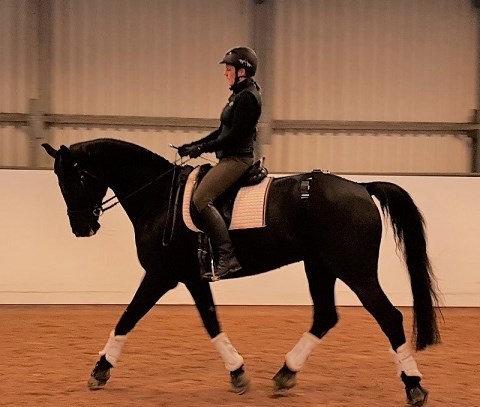Contact
Marie Rhodin
Researcher, Senior Lecturer at the Department of Anatomy, Physiology and Biochemistry (AFB)
Telephone: 018-672194
E-mail: marie.rhodin@slu.se

How the rider influences the horse's movements is important during lameness evaluations that involve riding tests, as well as for riders who want to discover possible lameness in their horse at an early stage. In the current study, researchers from the Swedish University of Agricultural Sciences and the Royal Veterinary College in the UK examined the symmetry in the movement pattern of 26 riding horses using objective sensor analysis.
The horses' pattern of movement was recorded both with and without riders, in straight line and a circle during rising trot, sitting trot and two point seat. For the two latter, the symmetry in the horse's movements was not affected. During rising trot, the influence of the rider seemed to be able to both reinforce and conceal a lameness, depending on when in the stride the rider sat down and what type of hindlimb lameness (impact or push-off) the horse had.
The study's findings provide important knowledge for veterinarians performing lameness evaluations including riding tests. However, further studies should be performed where horses with greater degrees of asymmetry, due to different orthopedic diagnoses, are examined.
The study is funded by Formas and was performed at the Strömsholm riding school.
http://journals.plos.org/plosone/article?id=10.1371/journal.pone.0195341
Emma Persson-Sjodin, Elin Hernlund, Thilo Pfau, Pia Haubro Andersen, Marie Rhodin. (2018) Influence of seating styles on head and pelvic vertical movement symmetry in horses ridden at trot. PLoS ONE doi: 10.1371/journal.pone.0195341
Marie Rhodin
Researcher, Senior Lecturer at the Department of Anatomy, Physiology and Biochemistry (AFB)
Telephone: 018-672194
E-mail: marie.rhodin@slu.se